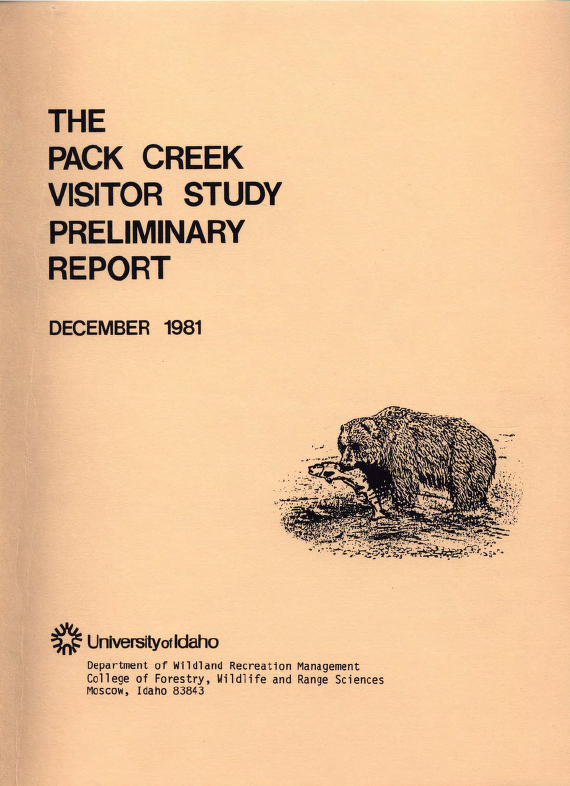Taylor Wilderness Research Station

Taylor is a secluded facility in the heart of the Frank Church-River of No Return Wilderness in central Idaho, which the University has owned and managed since 1970. Surrounded by over two million acres of wilderness, the facility has been an invaluable resource for wildlife surveys, rangeland monitoring and plant identification.
A few years ago, the CDIL was contacted by the people who run the station and were asked to digitize around 2000 documents that were vulnerable to deterioration. The documents were wide ranging, consisting of correspondences, memos and reports as well as hundreds of research papers that were the result of academic residencies at the station. Taylor management wanted to retain the physical documents, so the collection was never formally processed by our Special Collections department, presenting challenges that I’ll discuss in a moment.
In a separate project, also before my time at the university, CDIL Fellow Jack Kredell visited Taylor (which can only be hiked or flown into on small backwoods planes) and interviewed subjects on-location. In Jack’s words:
"The oral history project explores both the social and ecological dimensions of Taylor Wilderness Research Station through recorded interviews with past and present researchers, teachers, station managers, and students" with "interviews focused on uncovering often-ignored social and experiential content behind scientific pursuit, offering a narrative index of social-ecological change within a wilderness environment."
Under the guidance of Devin Becker, Associate Dean Research and Instruction for the library, the goal of this project was to create a collection combining these two resources which would not only give access to all of the scientific research that came out of the station but also provide interpretive material that would help visitors better understand the historic, human and geographic context of the institution.
✺

Metadata Standardization and Vetting
Both of these projects had been dormant for some time, due to some detailed metadata work that needed to be done before moving forward. This work involved standardizing author, place names and subjects, as well as surveying the collection for duplicates, and sometimes triplicates due to the “accession” never being formally processed by an archivist. Special Collections would have caught these redundancies along with sensitive information I later identified, such as applications containing social security numbers and home addresses of former student workers.
Documenting this process has enabled us to assess our procedures at CDIL for projects that are part of our digital collections but not formally accessioned. These repositories create an opportunity to highlight unique or at-risk community archive materials across our North Idaho region, while allowing these smaller institutions to maintain permanent stewardship. That said, they also create challenges regarding processing and digital preservation that we are still developing best practices for within the department.
✺